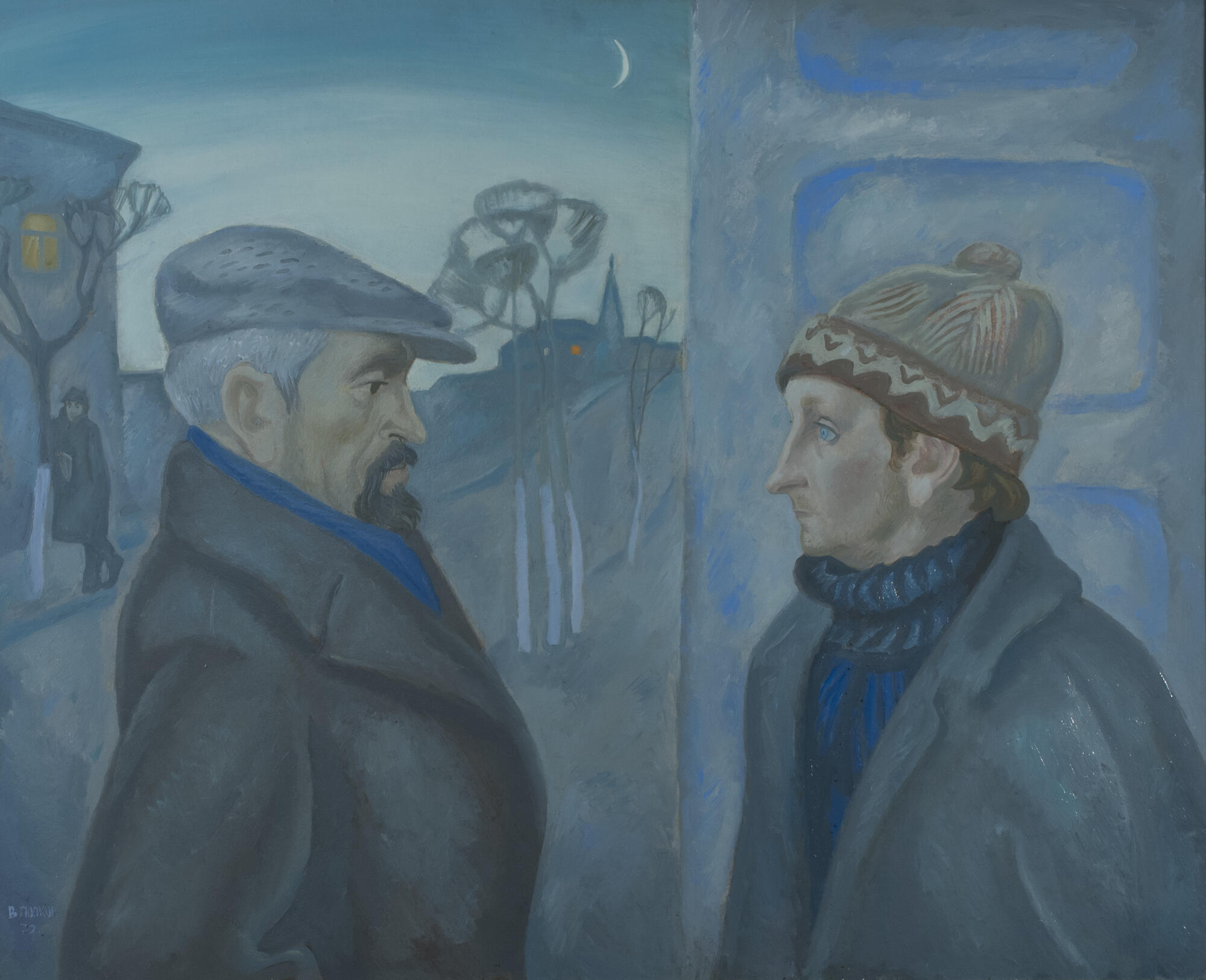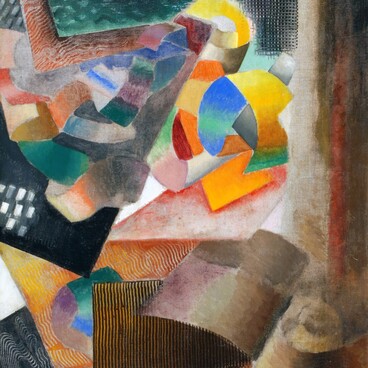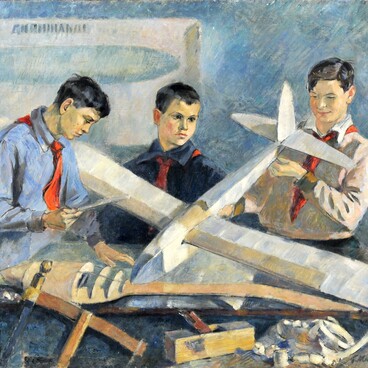Viktor Popkov is one of the key figures in the history of Soviet fine art, an artist who was distinctly civic- minded, who saw ‘the phenomena of life by the sign of how they conformed or were inconsistent with his sense of goodness, justice, and beauty’. He started out as one of the most vivid representatives of the ‘brutal style’ (Builders of the Bratsk Hydroelectric Power Plant, 1961, Tretyakov Gallery), but soon the creative energy of grand turns of speech was replaced by concentrated reflections on the meaning of life, and human connections with the past and present, with other people, and with nature. Starting in the second half of the 1960s, the artist’s work merges into an extensive stream of art where personal perception becomes determinative. The portraits
done by Viktor Popkov are set apart by a deep penetration into the spiritual life of their heroes, where what is key is the image of a contemporary who is prone to doubts and analysis.
Month of April
Creation period
1972
Dimensions
87,5x108 cm
Technique
oil on canvas
Collection
Exhibition
1
Open in app#1
Viktor Popkov
Month of April
#2
#3
’…it is vital for us to withdraw into ourselves. And this is not withdrawal, but arriving at yourself, and as you are a person, this means that you are returning to a person, and a person turns into what is the most important in an artist’s work…’
Viktor Popkov
#4
The hallmark of the new hero - the ‘thinking man’ - has become not so much activity, profession, or work, but the ability to think, intellect, and deep concentration. The strictly profile image of friends standing side by side and facing each other in the painting The Month of April, owned by the Radishchev Museum, hints at a kind of dialogue. But the glances are directed beyond, looking more inward than outward, speak of the deep thoughtfulness these people have, united not by a story line, but by a spiritual community.
The face on the left, white-haired artist Karl Friedman, with deep, mournful folds at the mouth, with the frozen gaze of his dark eyes, indicates the thoughts of a person who has experienced a lot, who has been dealt some blows by fate. Their figures are pushed so tightly to the bottom edge of the painting that the feeling arises that they are virtually close enough to touch the viewer. The painting The Month of April is a reflection portrait where the composition defines the equal right to exist for both the human theme of the models and the picture’s content, while remaining concerned about the psychological component.
The artist’s distinct personal attitude is expressed not only by the presence of the figure of Popkov himself in the painting, but also by how the artist conceives the models. It manifests itself in the need to see congruity with his spiritual and moral values in a particular individual. Through his interpretation of the models, the artist expresses his attitude toward reality as a whole, and indirectly articulates his ideals. ‘In every painting done over the last decade of his life, the artist invariably feels himself to be an accomplice of the imaginative world that he has created’. A frankness rarely shown official exhibitions made Popkov a legend during his lifetime.
This legend was tragically consolidated by his absurd death: he died in Moscow on December 12th, 1974, shot by an armored car guard whose vehicle he was rushing toward, having mistaken it for a taxi.
The face on the left, white-haired artist Karl Friedman, with deep, mournful folds at the mouth, with the frozen gaze of his dark eyes, indicates the thoughts of a person who has experienced a lot, who has been dealt some blows by fate. Their figures are pushed so tightly to the bottom edge of the painting that the feeling arises that they are virtually close enough to touch the viewer. The painting The Month of April is a reflection portrait where the composition defines the equal right to exist for both the human theme of the models and the picture’s content, while remaining concerned about the psychological component.
The artist’s distinct personal attitude is expressed not only by the presence of the figure of Popkov himself in the painting, but also by how the artist conceives the models. It manifests itself in the need to see congruity with his spiritual and moral values in a particular individual. Through his interpretation of the models, the artist expresses his attitude toward reality as a whole, and indirectly articulates his ideals. ‘In every painting done over the last decade of his life, the artist invariably feels himself to be an accomplice of the imaginative world that he has created’. A frankness rarely shown official exhibitions made Popkov a legend during his lifetime.
This legend was tragically consolidated by his absurd death: he died in Moscow on December 12th, 1974, shot by an armored car guard whose vehicle he was rushing toward, having mistaken it for a taxi.
#5
A.N. Radishchev Saratov State Art Museum
read morehide
00:00
00:00
1x
Month of April
Creation period
1972
Dimensions
87,5x108 cm
Technique
oil on canvas
Collection
Exhibition
1
Open in app
Share




